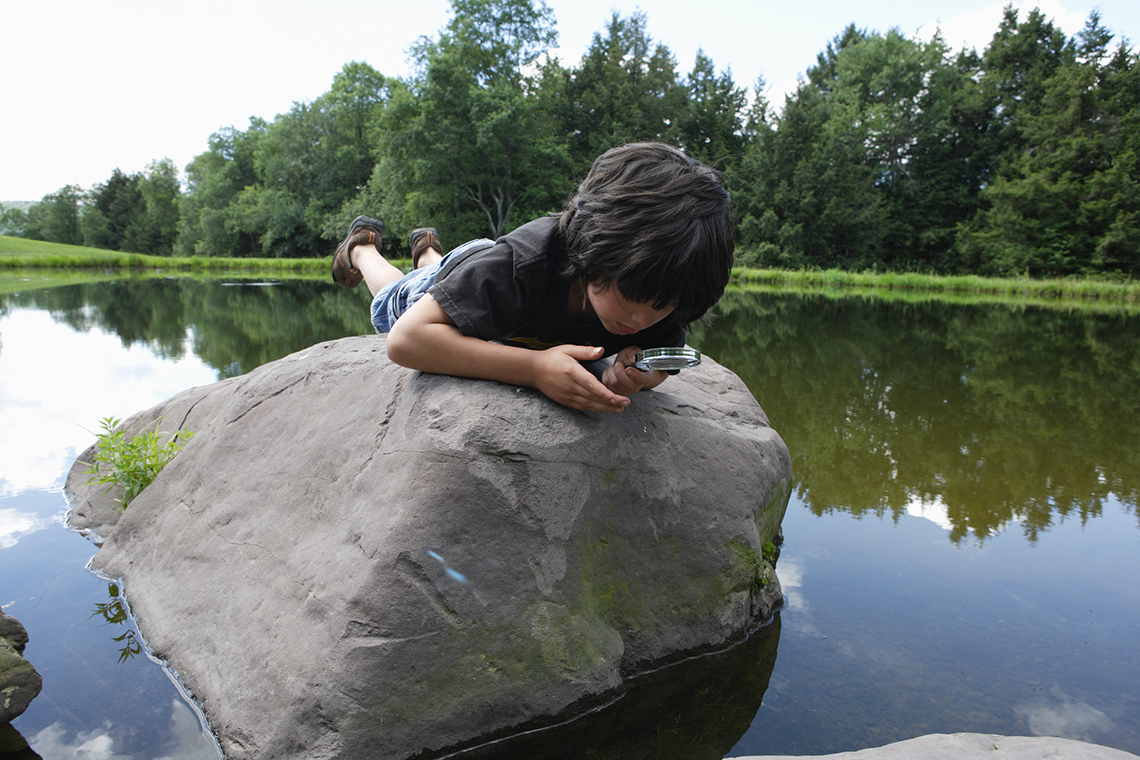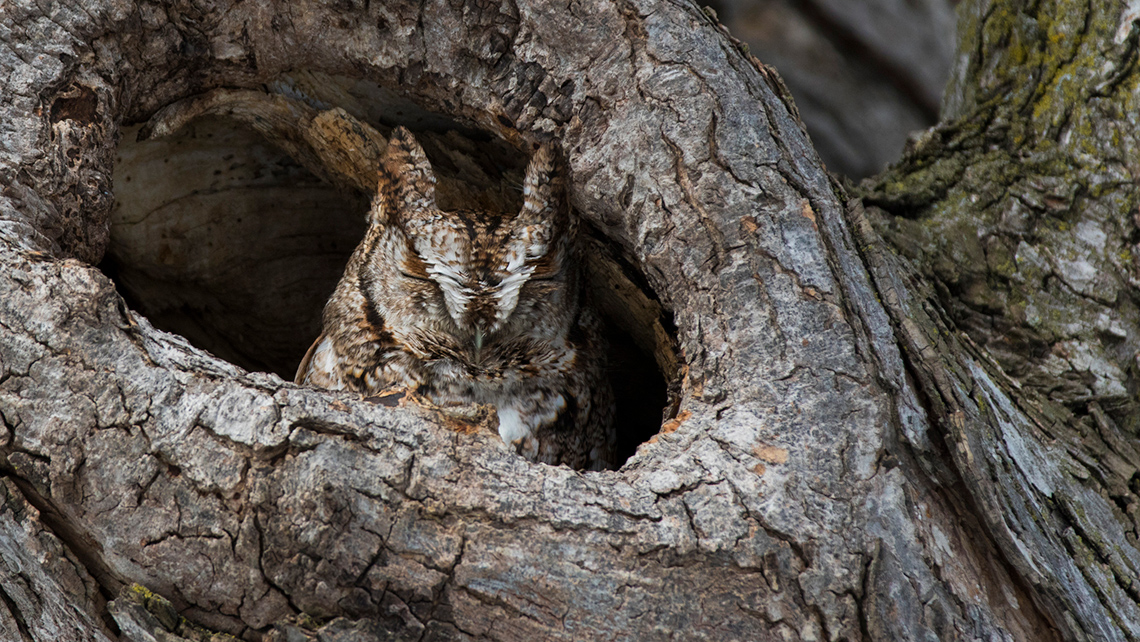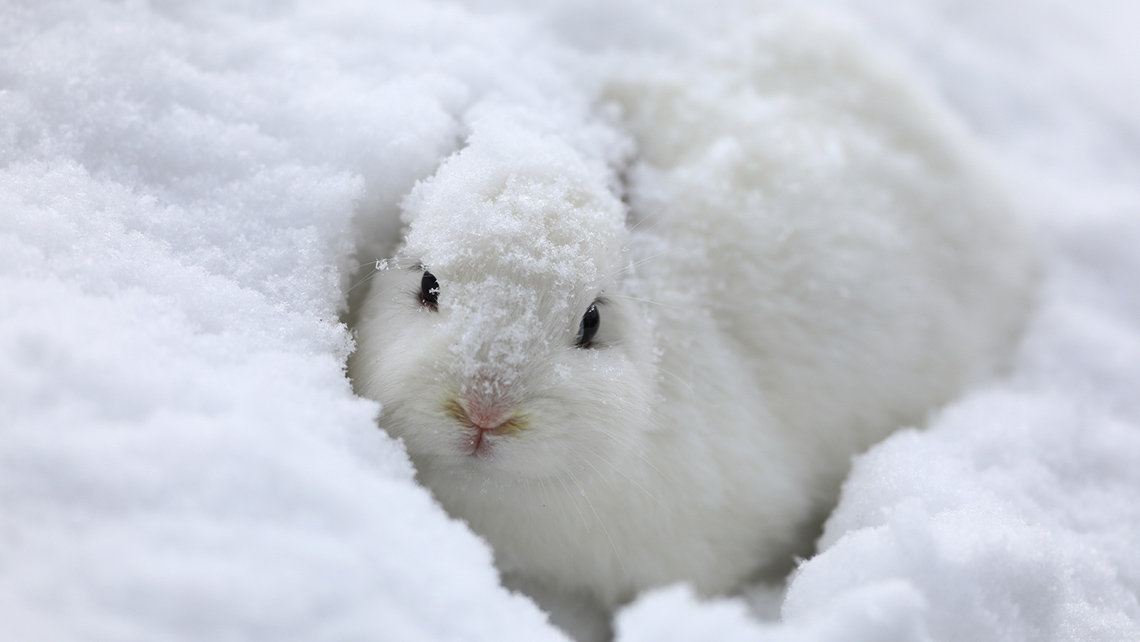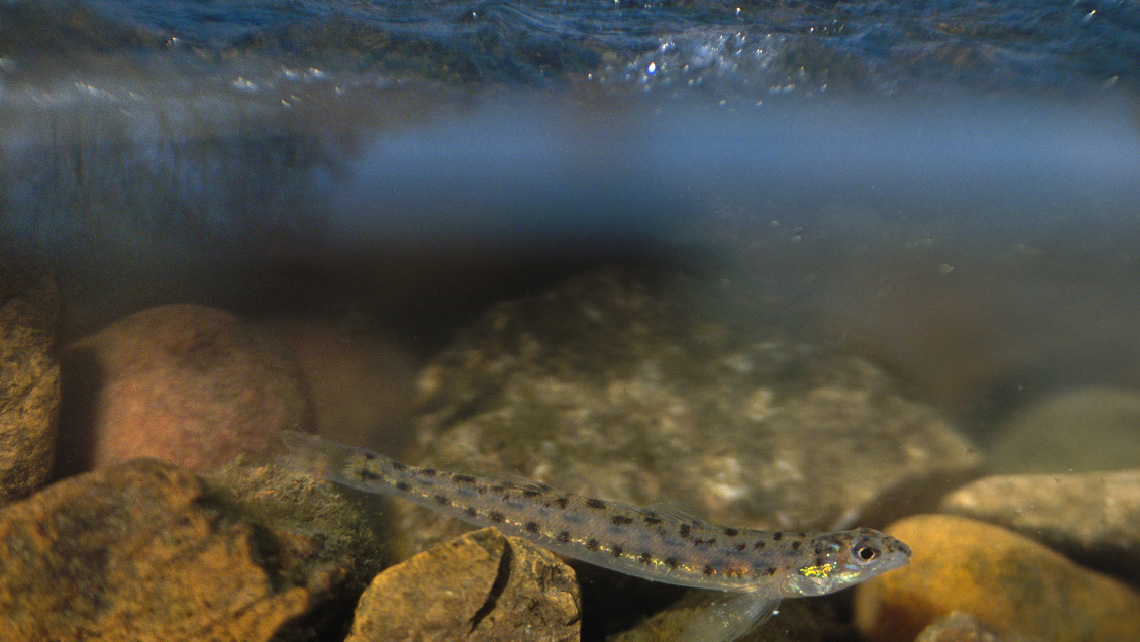Minds On
Investigating endangered species

The Eastern sand darter is an endangered species of fish in Ontario.
Endangered means there’s a real risk of it becoming extinct, like dinosaurs.
There are only a few creeks in Southern Ontario where the Eastern sand darter is now living.
Investigate the following image of an Eastern sand darter.

What do you notice, think, and wonder about the sand darter?
What questions do you have for scientists who are studying this fish?
Record your ideas in the following fillable and printable Think, Notice, Wonder document. You can also record your ideas using a method of your choice.
| What do I notice? | What do I think? | What do I wonder? |
|---|---|---|
| What questions to you have for scientists who are studying this fish? | ||
Press the ‘Activity’ button to access Think, Notice, Wonder.
Action
Animal adaptations
Let’s check out some animal adaptations!
Behaviour and appearance
Animals adapt to where they live and who they live with. This means that they have special body parts and behaviours that help them survive in their environment.
For example, animals who live in the far north adapt to the cold with fur and fat.

Adapting behaviours
Animals who live in warm areas adapt the to the heat by finding shade, drinking water, or swimming to cool down.

Animals who cannot adapt to the extreme weather migrate to another place where they are comfortable. Hawks and salmon are two migrating animals.
Adapting appearances
Another animal adaptation is their physical features. Animals can’t change their physical features, but over many generations the animals that are best able to live in their environment are the ones who survive. These animals pass down their traits to their young.
This is how we have animals who are camouflaged to their surroundings. For example:
- an Eastern screech owl can camouflage against a tree to help hide while hunting
- a Snowshoe hare can camouflage itself against the snow to protect itself from predators
- the sand darter can camouflage into sand and rocks at the bottom of a stream
Explore the following images of animals using camouflage!
Let’s check your learning!
In the following Matching activity, choose the animal that best fits the adaptation!
Pause and Reflect
Pause and reflect
Describe three different ways that animals can adapt to their environment. For each way, choose one example.
Record your answer on the computer, on paper, in a recording, or in a method of your choice.
Eastern sand darter

The Eastern sand darter gets its name from:
- the way it moves: by darting in quick short movements
- where it lives: in the sand
- how it behaves: it stays close to the sand to camouflage and buries itself into the sand to hide from bigger fish who might eat it
Did You Know
FishHeads
Let’s explore more about the sand darter with the FishHeads!
Access the following video entitled “Leo’s FishHeads: Hot Water” to learn about how the Eastern sand darter got its name.
The following are two adaptations the Eastern sand darter uses to protect itself:
- its physical appearance (colours and spots)
- the way it behaves
Let’s investigate further!

Time to learn! We can learn things from different places and people.
Let’s investigate with scientific researchers to understand how such a small fish can teach us about our changing environment.
You will be using research skills to do this investigation. Scientists observe the world around them using clues from words, images, sounds, smells, things they taste, and things they feel. To observe is a great way to learn!
We are going to explore a video clip about the Eastern sand darter. In the video, Sayat and Christian team up with some researchers to learn more about the Eastern sand darter.
The question these researchers and Sayat and Christian are trying to answer is:
How does the behaviour of the Easter sand darter change in warming water?
Knowing the answer will help scientists help fish in a changing climate where water becomes warmer.

Brainstorm
Make a prediction

Scientists make predictions when they do research. Explore this image and description to help understand predictions.
Predicting is when you make a guess about what you think will happen in your experiment.
Before we access the video, what is your prediction?
How do you think the behaviour of the Eastern sand darter changes in warming water?
Record your prediction in a format of your choice.
When I create a prediction, I…
The young scientists are about to conduct an experiment to learn more about the Eastern sand darter. When scientists conduct experiments, they follow certain rules and procedures that help to keep them safe and find answers to their questions and predictions.
Let’s explore some ways that scientists can experiment!

When you do an experiment, you are trying to find out the answers to the questions you asked.

Having a plan means you know the steps you need to do to do your experiment.

Sharing what you have learned lets other people know about your topic too!
What equipment and materials are needed to conduct their experiment? Using the following checklist, check off all the equipment and materials that you notice in the video:
Equipment and materials checklist
Now, let’s access the video “Leo’s FishHeads: Hot Water” to find out more about the Eastern sand darter.
When conducting an experiment, it is important to think about:
- what materials you need
- what steps you will take
- how you will stay safe
- how much time you will need
The Eastern sand darter can act as an indicator species. An indicator species gives clues to scientists about the temperature of the water and how it is affecting animals who live there.
Let’s explore the next part of Sayat and Christian’s experiment.
As you explore the video, try to follow along with the steps in the experiment.
Use your observations to put the experiment steps in order by following along with Sayat and Christian.
The Eastern sand darter experiment is run on many fish each day. Running an experiment many times helps to make sure that your answers to your research question can be confirmed.
If all fish behave the same way, then your results are reliable.
Consolidation
Drawing a conclusion

At the end of an experiment, scientists put their learning together into a conclusion. Most of the time the scientists create a list of new questions!
Create your own conclusion about the Eastern sand darter experiment. You can record your ideas using a format of your choice.
Use the following sentence starter to come up with your conclusion:
I used to think (Blank) but now I know (Blank).
Scientists also create a conclusion that are related to their research question. For this experiment, the question was:
How does changing the temperature of the water affect the behaviour of the Eastern sand darter?
This learning activity connects new and existing approaches for young scientists to create positive changes in their communities.

Animals like the Eastern sand darter can be helpful to scientists to understand how humans can better protect the habitat where these animals live. Through studying the Eastern sand darter, scientists can make some plans to protect and restore their habitat.
Pause and Reflect
Pause and reflect
What new questions do you have after this experiment?
How can your scientific understanding of warmer water temperatures and the Eastern sand darter help protect animals where they live?
Record your questions in a format of your choice.
What can people do? Press ‘Helping Ideas’ to check out how a Grade 2 student can help!
As our climate warms, we need to help keep streams cool for the health of species. What can people, including a Grade 2 student, do?
- You can help by joining tree planting efforts along stream and river banks to keep the water shaded and cool.
- You can plant smaller plants along shoreline to keep the soil in place, which keeps the water clear instead of getting too silty and sandy.
- You can learn more about species in your community and share your learning.
Reflection
How do you feel about what you have learned in this activity? Which of the next four sentences best matches how you are feeling about your learning? Press the button that is beside this sentence.
I feel…
Now, record your ideas about your feelings using a voice recorder, speech-to-text, or writing tool.


